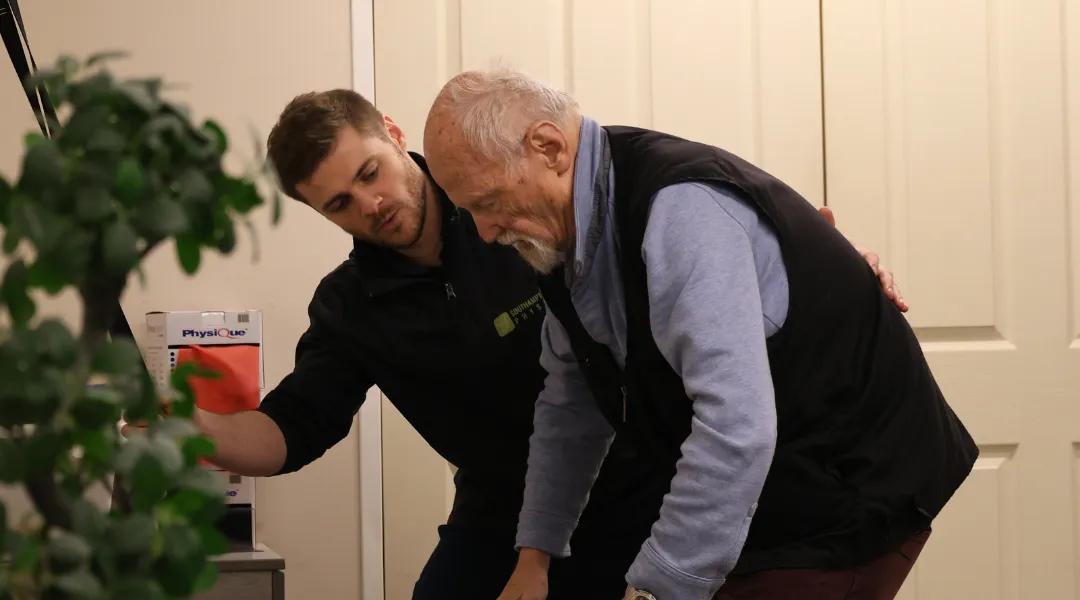
Articles

Tending to Pain: A Gardening Approach to Recovery
Introduction
Most people think of their body like a car. Something goes wrong, you take it to the mechanic, they fix the broken part, and off you go. It’s a neat story, and it works for machines. The trouble is, bodies aren’t machines. And pain doesn’t behave like a snapped fan belt.
If you’ve ever dealt with pain - especially the kind that lingers, shifts or shows up without warning - you’ll know how confusing it can feel. You rest, and it doesn’t improve. You stretch, and it comes back. Someone tells you it’s “all in your head,” and you feel dismissed. Someone else says, “your core is weak,” and you’re left chasing planks and sit-ups. None of it quite adds up.
That’s because pain isn’t caused by a single thing. It’s not a bolt we can tighten or a part we can swap out. Pain is complex. It emerges from a whole set of conditions in your body and life interacting at once. Which means if we want to manage it, we need a different frame of reference.
Instead of seeing the body as a machine to be fixed, what if we treated it more like a garden to be tended? In a garden, growth doesn’t come from one factor. It depends on soil, water, light, variety, the season and how you care for it. Pain - and recovery - work in much the same way.
In this blog, we’ll explore what makes pain complex, how it behaves like other emergent phenomena in nature, and why thinking of your body as a garden can change the way you approach recovery.
Complexity and Emergence in Pain
Picture yourself at a packed football stadium. The match is buzzing, the atmosphere electric, and suddenly a Mexican wave starts to roll around the stands. You might see a few fans jump up first - maybe spurred on by a song, the scoreboard or just the right mood in the crowd. But here’s the thing: those first people aren’t the cause of the wave.
The wave only takes off if the conditions are right. If the team is losing badly, the rain’s pouring down and the crowd is flat, it fizzles. But if the crowd is energised, the weather’s good and the timing feels right, the whole stadium joins in. What you get is more than the sum of its parts: thousands of individuals acting together to create a pattern no single person controls.
That’s emergence - a phenomenon that doesn’t live in any one place, but arises from the interaction of many parts.
Pain works in a similar way. There’s often a trigger - twisting your back, a stressful week, a poor night’s sleep. But whether that discomfort becomes a ripple that passes quickly or a full-blown flare-up that takes over your life depends on the wider conditions. Stress, sleep, past experiences, beliefs about your body and social support all shape how pain emerges and how it’s felt.
This is why pain so often resists simple explanations. “It’s just wear and tear” or “it’s just in your head” both miss the point. Pain doesn’t belong to one cause, just as the Mexican wave doesn’t belong to one fan. It’s the product of an interconnected system, and that makes it complex.
Why the Machine Metaphor Fails Us
When something goes wrong with your car, the logic is simple: find the broken part, swap it out, and everything runs smoothly again. That model is tidy, predictable and reassuring. Which is probably why we’re so drawn to using it for our bodies.
But pain doesn’t work like that. For one thing, you can’t just “replace” a sore knee or a stiff back. More importantly, pain isn’t a straightforward reflection of damage. It’s an alarm system - sometimes accurate, sometimes oversensitive, occasionally blaring at full volume even when there’s no real threat.
Think back to the Mexican wave. You could tell one fan to sit down, but the pattern keeps rolling because the system as a whole is driving it. Pain behaves in the same way. You can address one element - take a pill, get a scan, stretch a muscle - but if the wider conditions are still primed, the experience continues.
This is where the machine metaphor falls apart. Machines wear down with use; bodies adapt. Machines can only be fixed from the outside; bodies can change themselves, given the right stimulus. A mechanic repairs parts. A gardener creates conditions.
And when it comes to pain, you want a gardener’s mindset, not a mechanic’s.
The Garden Approach to Pain
If pain is an emergent phenomenon, then recovery isn’t about hunting for a single culprit. It’s about shaping the conditions in which your body can adapt, settle and grow stronger. That’s where the garden metaphor comes in.
A good gardener doesn’t just pull one weed and expect the whole plot to flourish. They think about soil, sunlight, variety and time. They know that every garden has its own quirks - some need more water, others thrive on neglect. And they know that growth is never instant. It’s the same with pain.
Let’s break down what that looks like in practice.
Creating the Right Conditions
You don’t force a plant to grow. You create the circumstances that make growth inevitable. With pain, this means supporting your body’s ability to adapt. Movement is key, but it has to be the right type and amount. Too little and things stagnate; too much and you overwhelm the system. Recovery also depends on the basics that so often get overlooked: sleep, food, stress levels and human connection. These are the sunlight, water and nutrients of your internal garden.
Different Environments, Different Approaches
A cactus in the desert and a fern in the rainforest both thrive - but only in the right environment. Treat them the same way, and one of them dies. People are no different. The “perfect” back exercise for one person might make another flare up. Some need structure and routine, others need freedom and variety. There is no universal recipe for recovery. The job is to understand your environment and work with it, not against it.
Variety Beats Monoculture
A garden planted with only one crop looks neat, but it’s fragile. One pest or a bad season, and the whole lot fails. The healthiest gardens are diverse - different plants supporting each other, keeping the soil rich. Our bodies are similar. Rely on the same repetitive movements day after day, and you increase your risk of overload. Mix it up - lift, walk, stretch, play - and you build resilience.
Soil Quality Matters
You can have the right seeds and even the right weather, but if the soil is poor, nothing thrives. In the same way, pain is influenced by the ground it grows in. Stress, poor sleep, anxiety, low mood - these drain the soil. Good nutrition, rest, social support and positive beliefs enrich it. Often, the work of recovery is less about chasing a single exercise and more about improving the soil your whole system grows in.
Patience and Regular Maintenance
Even the most carefully tended garden doesn’t transform overnight. You water, prune and weed - then wait. Some weeks nothing seems to change, then suddenly there’s a burst of growth. Recovery is just as non-linear. Pain can ease, flare and ease again. Progress comes not from a quick fix but from steady, consistent care. And like any garden, once things are flourishing, maintenance matters. The habits that got you better are usually the habits that keep you well.
Pain management framed this way isn’t about “fixing what’s broken”. It’s about cultivating the right environment, recognising what your particular body needs and giving it the time and space to adapt.
Implications for Recovery
So what does all of this mean when you’re the one living with pain? It means recovery isn’t about hunting for the one stretch, scan or supplement that will “fix” you. It’s about tending the conditions that allow your system to settle and adapt.
In practice, that often looks like:
Gentle persistence. Keeping up with movement, even when it feels awkward or progress is slow. A little, often, usually beats a heroic effort followed by collapse.
Experimenting and observing. Just like a gardener trying out different plants in different spots, you notice what thrives and what doesn’t. If something flares you up, adjust. If something helps, lean into it.
Cultivating resilience. You’re not aiming for a body that never hurts again - pain is part of being alive. The goal is to build a system that can handle the knocks, recover quickly and keep you moving.
Letting go of quick fixes. Pain that emerges from a whole ecosystem rarely disappears with one intervention. A massage, injection or pill might open a window - but the real work is what you do consistently afterwards.
The good news is that this approach puts control back in your hands. You don’t need to wait for someone else to swoop in and fix you. With the right guidance, you can start shaping your own conditions for recovery.
Conclusion
It’s tempting to see the body as a machine. Something goes wrong, you look for the faulty part, and you wait for someone else to repair it. But pain doesn’t fit that model. It’s not a single problem with a single solution. It’s a pattern that emerges from many parts of your life interacting at once.
That’s why the garden metaphor fits better. Gardens don’t thrive because you fix one thing. They thrive because the right conditions are nurtured over time - sunlight, soil, water, variety, and patience. Your body works the same way.
When you stop looking for a quick repair and start tending to your internal garden, things shift. Pain becomes less of a mystery and more of a signal - sometimes too loud, sometimes inconvenient, but always part of the living system you are. And living systems are designed to adapt.
So if you’re struggling, remember this: your body is not broken. It’s a garden. And with the right care, it can flourish.
